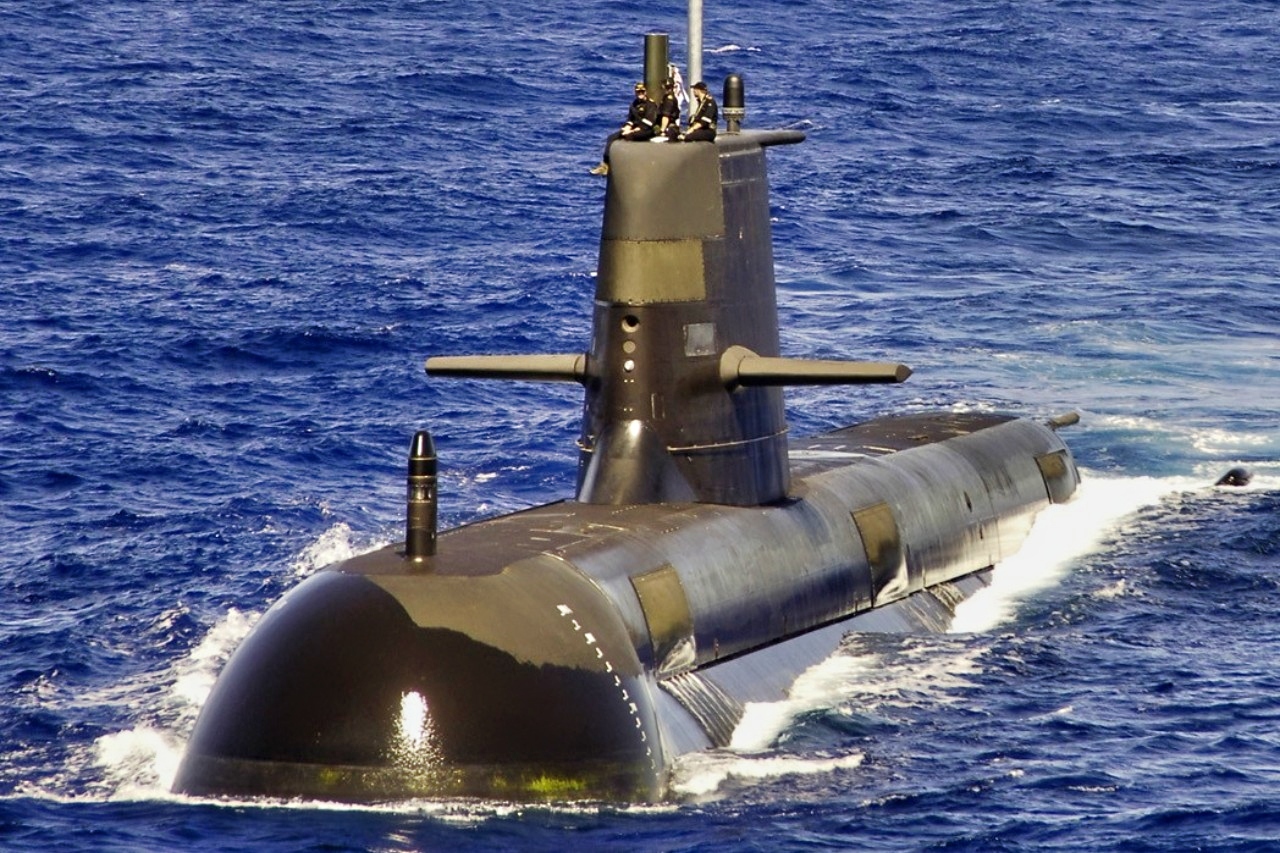Key Points and Summary on the Collins-Class: Australia’s Collins-class submarine program has been a decades-long “national security failure,” plagued by severe technical problems, cost overruns, and a dysfunctional management structure.
-From their inception, the six diesel-electric boats were dubbed “Dud Subs” and “noisy as a rock concert” due to persistent issues that left the fleet with near-zero availability for years.
-As recently as December 2024, five of the six submarines were reportedly out of action, and the program was placed back on the “Project of Concern List.”
-The troubled history of the Collins-class raises serious questions about Australia’s undersea warfare capability.
The Collins-Class Submarine Problem for Australia
For the past decade or more, the Royal Australian Navy’s (RAN) six Collins-class submarines have been the force’s primary underwater warfare capability. At the time of their construction and launching, these boats had been designed to fulfilll operational requirements that were well beyond the performance of other conventional/non-nuclear submarines of the day.
Whenever they were needed, His Majesty’s Australian Government was supposed to be able to call on the submarine force for an entire list of missions and national security needs. However, the history of the Collins boats’ operation has not been entirely smooth.
Due to various “teething pains” and other required adjustments, it was some two decades from the time that the Collins-class subs were regarded as reliable and had an acceptable availability rate.
When the initial boat in that class, the HMAS Collins, was first delivered, the RAN and the Australian Defence Force (ADF) were often unsure if they could rely on it with any degree of confidence that it would be available.
As an extended profile on the subs reads, “for a long time, more than $10 billion of investment had provided the nation with very little payback in terms of a credible defense capability. Submarines spent years out of commission, and availability across the fleet dwindled—sometimes to near zero.”
A Difficult Beginning
The problems with the Collins-class submarines began very early on after their introduction into service. The construction and terms of delivery of these boats created a politicized environment from the outset. There were the predictable negative reports that are the norm for any new major procurement by any government.
These were: cost overruns, program schedule delays, technical problems, and other difficulties. Bottlenecks that were time- and labor-intensive to correct and details about them dominated the headlines of major newspapers daily.
The publicity was so bad that labels coined by some correspondents covering the program, “Dud Subs” and “noisy as a rock concert”, became popular digs at the Collins boats.
The “bad news just seems to go on forever” environment was exacerbated by what a 2011 RAND report described as a failure to “effectively manage the media” and that the “bad press that accompanied the Collins effort still taints the program in the mind of the general public.”
This negative news about the program subsided once the technical problems identified when they had first entered service had been resolved. However, a steady stream of reports that revealed industrial base issues and inadequate support for the program began to accumulate.
Studies, audits, and critical reports were commissioned, and numerous recommendations were made. However, as is often the case in most major government projects, no effective action appeared to be taken.
Program, Organization, and The Same Old Problems
Many of the deficiencies identified seemed to be related to an hopelessly unmanageable program structure that was composed of the RAN, the government-owned contractor managing the program, ASC, that was owned by the Department of Finance and another separate group from within the Department of Defence responsible for project management, the Defence Materiel Organisation (DMO) had collectively become a “highly dysfunctional and occasionally outright hostile” constellation of entities, according to more than one report.
Fast forward to December 2024, and the situation appears to have improved only slightly. As of the end of last year, according to The Australian, a national newspaper, five of the six Collins Class submarines were out of action.
The Chief of Navy, Admiral Mark Hammond, defended the boats, saying they remained “world-class diesel boats” that were “meeting the operational requirements of the Australian government”
What the admiral failed to say, read another news report, and what is “understood by few, perhaps not even by our bathtub admiral Defence Minister, is that Collins represents a more than $20B national security failure caused exclusively by incompetence.”
In that, some months, Defence Industry Minister Pat Conroy placed the Collins submarines back on the Project of Concern List. “It is likely that the Collins-class will never come off that list,” writes the reporter from the December 2024 The Australian news story. “They’ll be on there until they are retired from service, and that could be sooner than the Navy would like and indeed potentially before their planned nuclear replacements are available.”
About the Author:
Reuben F. Johnson is a survivor of the February 2022 Russian invasion of Ukraine and is an Expert on Foreign Military Affairs and Director of the Asian Research Centre with the Fundacja im. Kazimierza Pułaskiego in Warsaw. He has been a consultant to the Pentagon, several NATO governments and the Australian government in the fields of defense technology and weapon systems design. Over the past 30 years he has resided in and reported from Russia, Ukraine, Poland, Brazil, the People’s Republic of China and Australia.
The Best Tanks on Earth
AbramsX: The Tank the US Army Wants










